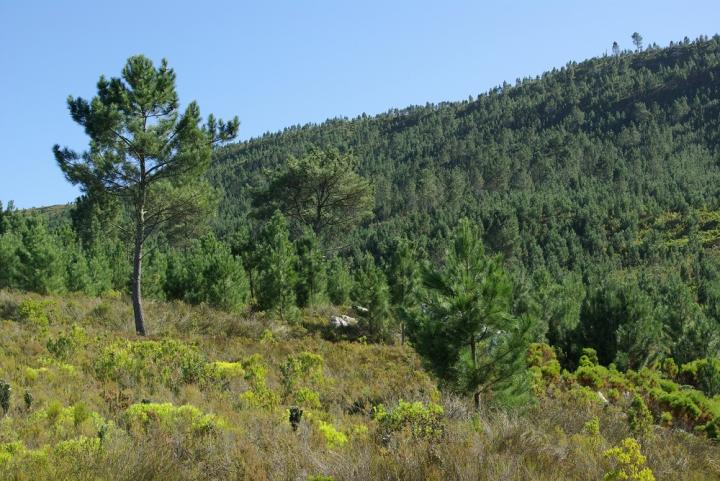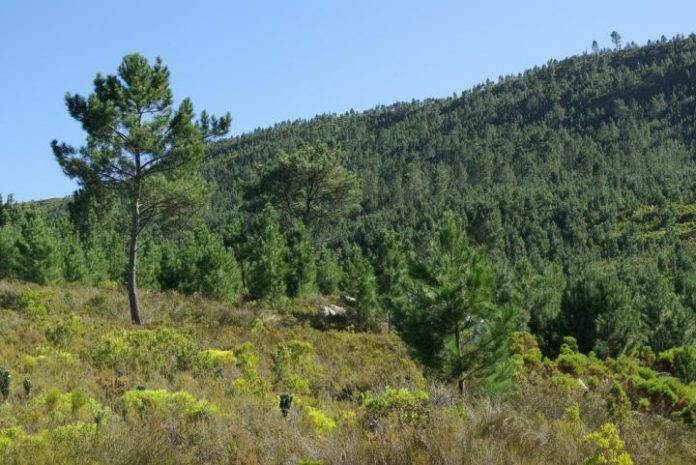
Photo: Pinus pinaster, one of many non-native trees that is highly invasive and causes major impacts in South Africa. The image shows a dense invasive stand of pines in the mountains…
view more
Credit Image: Dave Richardson
A team of international scientists have collaborated to propose a series of global guidelines for the sustainable use of non-native tree species to help protect biodiversity and ecosystems around the world already threatened by climate change.
The new paper, published today in the journal NeoBiota, uses the Council of Europe – Bern Convention Code of Conduct on Invasive Alien Trees as a starting point, to present eight recommendations all aimed at maximising the benefits of non-native trees, while minimising their negative impacts.
The guidelines include using native trees, or non-invasive non-native trees as opposed to invasive non-native trees, being aware of the risk of invasion and consider global change trends and developing and supporting global networks and collaborative research and information sharing on native and non-native trees.
The scientists suggest that the guidelines are a first step towards building a global agreement on the precautions that should be taken when introducing and planting non-native trees and serve to complement statutory requirements under international and national legislation.
Lead author Dr Giuseppe Brundu, from the University of Sassari, Italy, said, “The application of the global guidelines and the achievement of their goals will help to conserve forest biodiversity, ensure sustainable forestry, and contribute to the achievement of several Sustainable Development Goals (SDGs) of the United Nations linked with forest biodiversity.”
The researchers highlight how non-native species – such as Prosopis juliflora which was introduced in Eastern Africa in the 1970s to provide wood and fodder for livestock and help reduce soil erosion and the effects of dust storms – make up 44% of plantation forests globally.
They point to major tree planting campaigns, including the 60 Million Trees Initiative from the Madagascar Government, which either do not specify or include non-native species planted – often to balance economic and ecological interests as with the case in Madagascar. Other similar schemes have included 60 million trees planted in Italy – one for each Italian citizen to fight climate change – where a mix of native and non-native tree species were recommended.
However, the scientists warn that unless their global guidelines are taken seriously the spread of non-native tree species will make the conservation of forest biodiversity and work towards achieving a number of SDGs – linked with forest sustainability – difficult to achieve.
Professor Dave Richardson, co-author from Stellenbosch University, South Africa, said, “The global guidelines on non-native tree species offer general recommendations and provide a basic framework and suggestions on tools for planning and implementing sustainable use of non-native trees in nationally appropriate and scientifically sound practices that account for national and sub-national needs.”
Dr Urs Schaffner, co-author and Head Ecosystems Management at CABI Switzerland, is an expert on Prosopis juliflora and believes such invasive trees can also impact severely on rural people’s livelihoods with, for example, 86% losses in grassland experienced in Baringo Country, Kenya.
Dr Schaffner added, “It is important to bear in mind that national circumstances vary considerably in terms of biophysical conditions, institutional and legal frameworks, economic challenges and possibilities, management, and use, among other factors.
“Therefore, no ‘one-size-fits-all’ approach can be applied in the implementation of the guidelines. Instead, various technical and organisational options must be combined to achieve efficient implementation of the guidelines.”
###
Additional information
Main image: Pinus pinaster, one of many non-native trees that is highly invasive and causes major impacts in South Africa. The image shows a dense invasive stand of pines in the mountains of the Western Cape (Credit Image: Dave Richardson).
Full paper reference
Brundu G, Pauchard A, Pyšek P, Perg J, Bindewald AM, Brunori A, Canavan S, Campagnaro T, Celesti-Grapow L, Dechoum M de S, Dufour-Dror J-M, Essl F, Flory LS, Genovesi P, Guarino F, Guangzhe L, Hulme PE, Jäger H, Kettle CJ, Krumm F, Langdon B, Lapin K, Lozano V, Le Roux JJ, Novoa A, Nuñez MA, Porté AJ, Silva JS, Schaffner U, Sitzia T, Tanner R, Tshidada N, Vítková M, Westergren M, Wilson JRU, Richardson DM, ‘Global guidelines for the sustainable use of non-native trees to prevent tree invasions and mitigate their negative impacts,’ NeoBiota, DATE IN HERE,2020. DOI: 10.3897/neobiota.61.58380.
The paper is available to view open access from here: https:/
Media enquiries
Dr Giuseppe Brundu, University of Sassari, Viale, Italy, email: [email protected]
Dr David Richardson, Stellenbosch University, South Africa, email: [email protected]
Dr Urs Schaffner, CABI Switzerland, email: [email protected]















